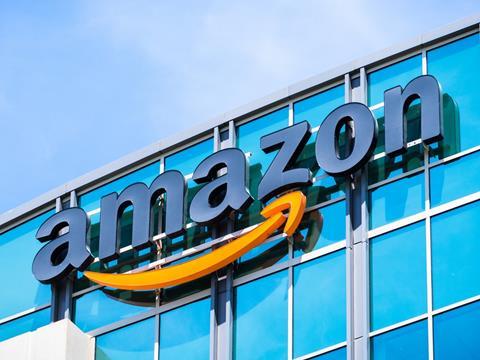
In an exclusive statement to Packaging Europe, Amazon has spoken of its desire to eliminate unnecessary packaging, rightsize and lightweight the remainder, and reduce both waste and carbon emissions.
A spokesperson from Amazon told Packaging Europe that “Amazon customers want right-sized, easily recyclable packaging that minimises waste and ensures damage-free delivery. Our first priority is to eliminate additional Amazon packaging altogether. Since 2015, we have reduced the weight of outbound packaging per shipment by 38% and eliminated more than 1.5 million tons of packaging material.
“When packaging is required, we optimise with lighter, right-sized packaging to reduce waste and carbon, while ensuring products arrive safely. In 2021, we reduced average plastic packaging weight per shipment by more than 7%.”
The company says that it supports the efforts of the European Commission to combat excessive packaging and waste in online sales through such legislative measures as the Packaging and Packaging Waste directive review. Amazon is apparently investing in packaging designed for e-commerce, wherein suppliers can provide robust enough packaging that no secondary packaging needs to be added – the retailer only needs to supply a delivery label to ship the product. This is similar to the ‘Shipped in Own Container’ system suggested by former executive Rachel Johnson Greer in a 2020 interview.
Amazon conceded in its 2021 Sustainability Report that its plastic film was not yet suitable for kerbside recycling – clarifying in a blog post that the material is recyclable through store drop-off locations, yet acknowledging the impact this has on consumer convenience. In its European operations, Amazon has reportedly removed a range of single-use plastic products from its stores and replaced all single-use air pillows with recyclable paper material for product protection. It has also swapped all single-use delivery bags with recyclable paper alternatives and cardboard envelopes for shipments from fulfilment centres, the company says.
Amazon’s critics include the NewClimate Institute and the Carbon Market Watch, who have previously accused the retailer of inflating its sustainability claims by 60%. Four years ago, Amazon disclosed its carbon footprint for the first time, yet it would not elaborate on its roadmap for reaching net zero or how it planned to report on its carbon emissions. Its Sustainability Report later admitted that its carbon footprint grew by 18% in 2021.
Yet, with Optimizon, The Values Institute, and an NPR/Marist survey naming Amazon as the most trustworthy marketplace amongst consumers, its engagement stays high.
However, Mondi Group’s e-commerce director Nedim Misic told Packaging Europe that, in the company’s research, 67% of consumers would no longer shop with an online retailer that delivered its orders in oversized packaging, and 62% would avoid retailers that used excess internal packaging material. As sustainable packaging increasingly ties into both international legislation and brand identity, Amazon has been taking steps to close the gaps in its sustainability-minded practice.
It recently announced its collaboration with the US Department of Energy’s BOTTLE Consortium to develop a new recovery and recycling process for mixed plastic waste streams, and aims to design its wayward materials to biodegrade in the environment.
Additionally, Sustainability Awards 2022 finalist Smurfit Kappa unveiled a 100% paper-based packaging solution enabling Reckitt to sell its branded products on Amazon without the need for single-use plastic blisters or fillers.
If you liked this article, you might also enjoy:
McKinsey on whether or not on-pack sustainability claims affect consumer spending
A deep dive into the most important packaging sustainability trends and solutions





















No comments yet